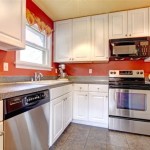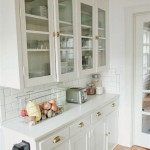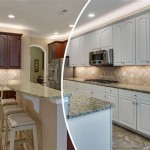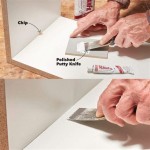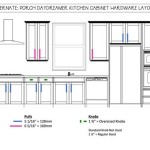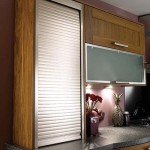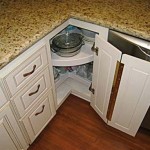White Kitchen Cabinets to Ceiling: A Comprehensive Guide
White kitchen cabinets have long been a popular choice for homeowners, as they create a timeless and elegant look that complements various design styles. When paired with floor-to-ceiling cabinetry, white cabinets expand the visual height of a kitchen and provide ample storage space. Here are some essential aspects to consider when designing a kitchen with white cabinets to the ceiling:
Maximize Vertical Storage
One significant advantage of floor-to-ceiling kitchen cabinets is their ability to provide vast amounts of storage space. By extending the cabinetry all the way to the ceiling, homeowners can maximize their storage capacity without taking up additional floor space. This is particularly beneficial in smaller kitchens, where floor space is limited.
Create a Sense of Height and Spaciousness
White cabinets that reach to the ceiling create the illusion of higher ceilings and a more spacious kitchen. The vertical lines of the cabinetry draw the eye upward, making the room feel larger and more open. This effect is particularly useful in kitchens with low ceilings or limited natural light.
Enhance the Architectural Integrity
Cabinets that extend to the ceiling can seamlessly integrate with the architectural details of a kitchen, creating a cohesive and sophisticated look. By aligning the cabinet doors with the moldings and trim, homeowners can create a sense of continuity and elevate the overall aesthetic of the space.
Consider Practicalities
While floor-to-ceiling cabinetry offers many advantages, there are some practicalities to keep in mind. One potential drawback is the accessibility of upper cabinets. To facilitate easy access, consider installing appliances like microwaves or ovens at eye level. Additionally, adjustable shelves and rollout drawers can make it easier to reach items stored in higher cabinets.
Choose the Right Cabinet Style
The style of white cabinets should complement the overall design concept of the kitchen. Modern kitchens often feature flat-panel or Shaker-style cabinets, while traditional kitchens may opt for raised-panel or beaded-inset cabinets. The cabinet material should also be carefully considered, with options ranging from painted wood to laminate and thermofoil.
Incorporate Lighting
Proper lighting is crucial for illuminating floor-to-ceiling cabinets. Under-cabinet lighting can cast light into the lower cabinets, while recessed or pendant lighting can provide ambient light for the upper cabinets. Consider incorporating glass-front cabinets or adding decorative lighting fixtures to showcase prized possessions.
Consider the Color Scheme
While white cabinets provide a neutral backdrop, pairing them with other colors and finishes can create a dynamic and stylish kitchen. Add warmth with natural wood accents, introduce contrast with black or gray countertops, or incorporate pops of color through backsplash tiles or kitchen accessories.
In conclusion, white kitchen cabinets to the ceiling offer numerous advantages, from maximizing storage space and creating a sense of height to enhancing architectural integrity and providing practical solutions. By carefully considering the style, material, and functionality of the cabinets as well as the lighting and color scheme, homeowners can create a beautiful and functional kitchen that will be enjoyed for years to come.

White Kitchen Cabinets To Ceiling With Tumbled Marble Backsplash Fusion Other By Denise Quade Design Houzz

How To Extend Kitchen Cabinets The Ceiling

Floor To Ceiling Shaker Kitchen Cabinets Design Ideas

Don T Take Your Kitchen Cabinets To The Ceiling

Cabinets To Ceiling Yes Or No Nelson Cabinetry

Tall Ceiling Kitchen Cabinet Options

Crown Your Semi Custom Cabinets With Serious Ceiling Style Wf Cabinetry

Floor To Ceiling Shaker Kitchen Cabinets Design Ideas

White Kitchen Cabinets Lamp With Nice Box Ceiling Interior Rendering Services Modern Salt Lake City By User Houzz

White Herringbone Sink Backsplash Transitional Kitchen
Related Posts

